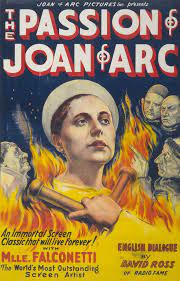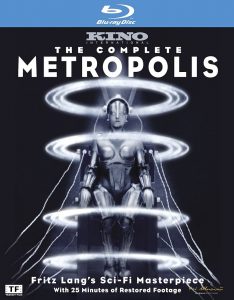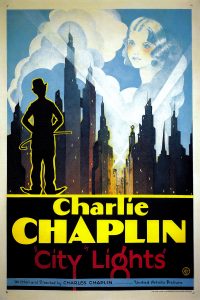5 Silent Movies That Are Great To Watch Even Today
Guest blog by film enthusiast Craig Hunter.
Cinema has come a long way, making it easy to overlook the importance of silent movies in cinematic history. These movies compensate for the lack of dialogue by using over-the-top expressions and a slower pace that requires greater concentration. In some movies, these elements help to build up the suspense that advances the story.
However, many of these movies feature excellent storylines and an old-world charm that appeals to younger viewers who want to see something new. These types of films can also provide different perspectives that spark interest in other classic movies.
1. The Passion of Joan of Arc

The Passion of Joan of Arc, released in 1928, exemplifies the use of close-ups which are one of the defining features used in silent movies. Carl Theodor Dreyer, the director, used actress Maria Falconetti’s natural expressiveness to capture her interpretations of the saint’s actions.
This movie focuses on Joan’s victory during the Hundred Years War and her subsequent arrest and trial. As a person persecuted and prosecuted for her actions, the pain that Falconetti expresses comes across quite convincingly. The characters’ gestures and expressions help advance the story without narration and help hold everyone’s attention.
Another imagery that makes scenes from the film stand out is the juxtaposition between Joan and her tormentors. The sun shining in through a window and creating a cross shape on the floor, Joan’s hair falling as she is shaved, and items from the torture chamber are perfect examples of the use of close-ups in silent film to highlight some of the most critical features that drive the story.
2. The Lodger

The Lodger was the most successful silent movie by Alfred Hitchcock and the first film to use the elements he became famous for as a director. One of the movie’s most important firsts is the director’s use of a cameo, which would play a role in his subsequent movies. The movie starred Ivor Novello, one of the most beautiful stars of the 1920s.
The movie’s plot focuses on the hunt for Jack the Ripper, a storyline very familiar to modern audiences. Novello’s character, a beautiful blonde named Daisy, has a suitor in the form of a detective who may or may not be the killer. The nocturnal London setting adds to the suspense in ways that modern movie watchers, especially horror and suspense film fans, can appreciate.
Despite pre-dating some of Hitchcock’s better-known works, The Lodger helped set the stage for the director’s “brand.” The interactions between Daisy and her suitor represent the character interactions in later Hitchcock movies. Each scene adds suspense in a way that fans of this director’s movies generally will appreciate.
3. Metropolis

Fritz Lang’s Metropolis was the most costly movie made during its 1927 release. This old movie has served as an inspiration for cyborg and dystopian-themed movies up to modern times. Themes familiar to modern audiences that arise in this film include class differences, obsession with technology, and industrialization’s worst effects.
For an older movie shot in black and white, “Metropolis” depicts a range of artistic settings, from modern skyscrapers to subterranean areas. Modern science fiction movies that use dramatic modern cityscapes owe much to this film. The black-and-white cinematography highlights the contrast in the scenes, making a dramatic effect even without colorized scenes.
The special effects, while simple by modern standards, are impressive in their way. Lang was a director with a reputation for perfectionism that showed in the finished product. For its time, the movie used technology remarkably well.
4. City Lights

City Lights marks one of Charlie Chaplin’s most notable movies because it marked a significant time of transition for him. During a time when silent film actors were switching to “talkies,” Chaplin preferred the silent genre. Although it lacks human dialogue, the movie uses sound effects and a self-composed score in novel ways.
In some ways, this movie retells the story from “Broken Blossoms,” a work that received far less attention. Chaplin brings his Little Tramp character to the front and center as he pursues a blind girl selling flowers. Modern viewers can appreciate Chaplin’s comedic twist to depict the character with a distinctive flair.
This movie highlights the relationship between Chaplin and the flower-seller to an extent uncommon in movies of this era as he seeks money to restore her vision. In a dramatic final scene, the girl realizes who has been helping her. The acting demonstrates the importance of physical cues in a silent film.
5. The Cabinet of Dr. Caligari

The Cabinet of Dr. Caligari was a work by Robert Wiene that premiered in 1920 – the same year when the first NFL game was played. This movie was a pioneer in the area of set design, which played a vital role in this era. Everything in the design blends with the storytelling for a greater degree of suspense, marking one of the earliest examples of a thriller movie.
This movie’s story comes from an 11th-century myth about Caligari, a mountebank monk with an otherworldly influence over a man named Cesare. When two men encounter Caligari, and one of the men gets killed, the other realizes Caligari’s role in causing Cesare to commit murder. One of the exciting twists is Cesare appearing comatose to most.
Despite its regard as an early horror movie, “The Cabinet of Dr. Caligari” also has similarities to modern psychological thrillers. In many ways, this movie laid the foundations for themes found in later horror films. The influence is impressive, primarily when only 20 of Wiene’s movies exist.
